Wetpixel coverage: DEMA 2014

DEMA Show 2014
The annual DEMA show is the world’s biggest scuba and underwater equipment show and is also the venue for the vast majority of new product releases. Wetpixel attends the show with the express purpose of trying to bring the “contents” of the show to those that cannot attend. We will be posting daily updates over the next four days, so please keep checking back.
Day 1
The day started with the Scuba Radio team (and their mermaid helpers) amping up the gathering crowd waiting to get in. The show only opens at 10, so there was a scrum when the the gates opened!

Backscatter
I started my day (and the show) by visiting the Backscatter booth. When I arrived, John Ellerbrock of Gates was showing the Backscatter team the new Gates GT14 light:
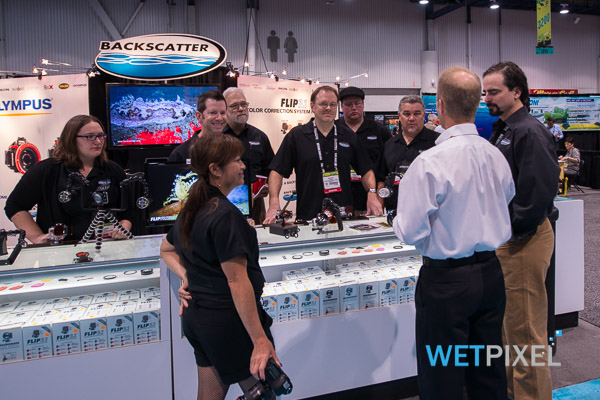
While they were being briefed, I spoke to Andy Bausk of Olympus. Backscatter are the underwater distributer for Olympus USA, so he was sharing stand space with them.
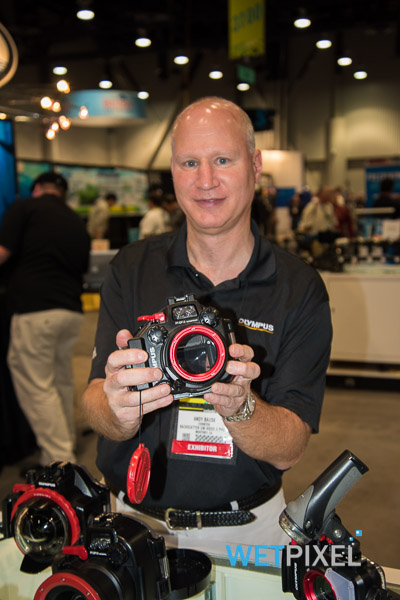
He showed the the PEN EPL7 mirrorless camera which as a 16MP sensor, 3 axis optical stabilization and an LCD that can fully rotate for “selfies”. It is equipped with Wifi and can be controlled via iPhone/iPad apps. Whilst these are desirable features on many cameras, they are perhaps not key selling points for underwater use.
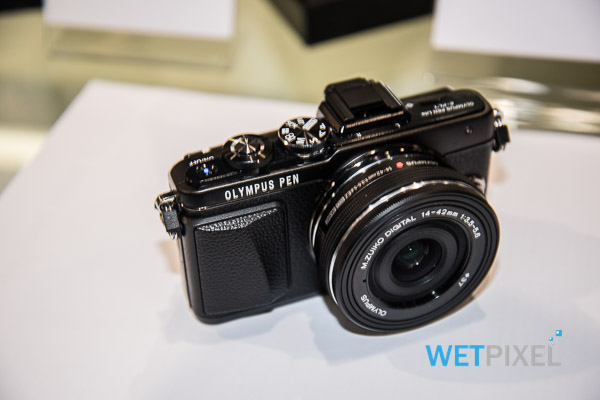
Attached to the camera was Olympus’s new 14-42 f3.5 EZ zoom lens. This has a power zoom that can be controlled via the arrow buttons on the rear of Olympus cameras. It has a 7.8” minimum focus. Lastly, he showed me the PT-EP12 housing for the camera.
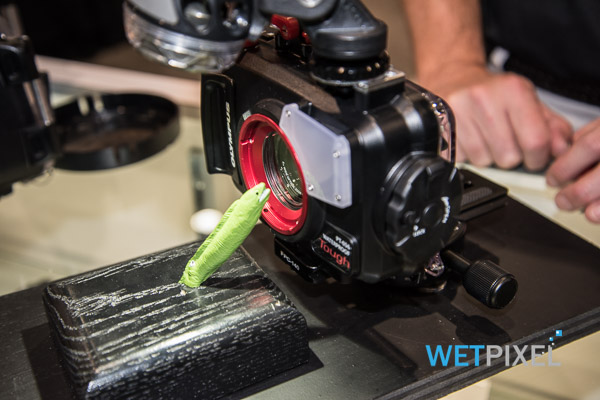
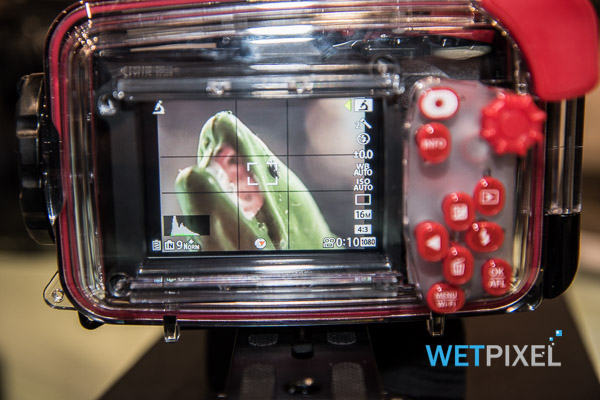
There was an interesting demonstration model of the Olympus TG3 compact camera, in its PT-059 housing. This camera features a “microscope mode” that allows it to focus very close to the glass of the housing’s port.
Whilst on the subject of Olympus, Backscatter have announced a significant price decrease on a package containing the OMD EM-5 camera, the 14-42mm lens and lens gear, along with the associated Olympus housing. The package will be retailing at $1,499.
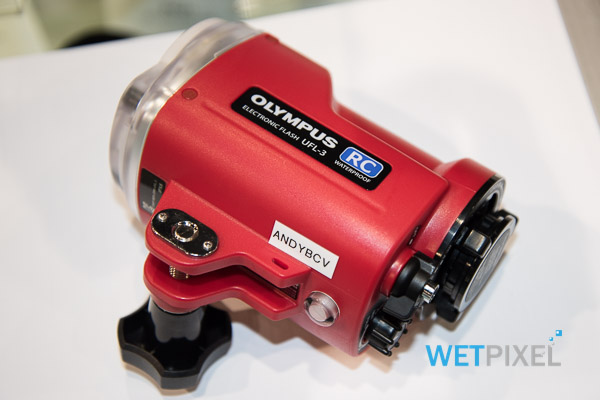
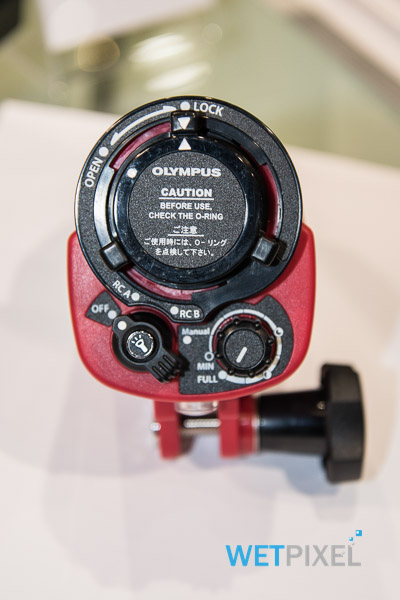
Lastly we looked at the Olympus RC strobes. This features the unique ability to be controlled via a data signal sent from an Olympus camera via fiber optic, rather than simply via a light signal. This allows for independent, reliable and flexible control of the strobe.
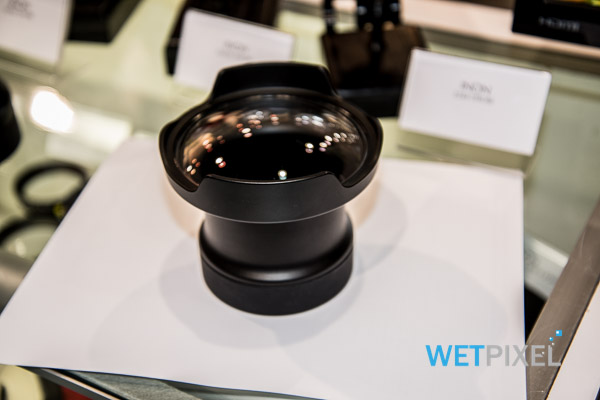
Jim Decker of Backscatter then took me through a new range of lens ports by AOI specifically designed for the Olympus PEN and OMD housings. These provide lens support for almost all the common underwater lenses used with these cameras and each port has specific versions for either PEN or OMD housings.
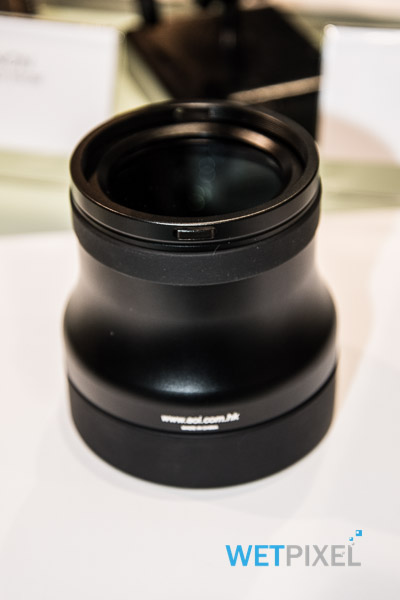
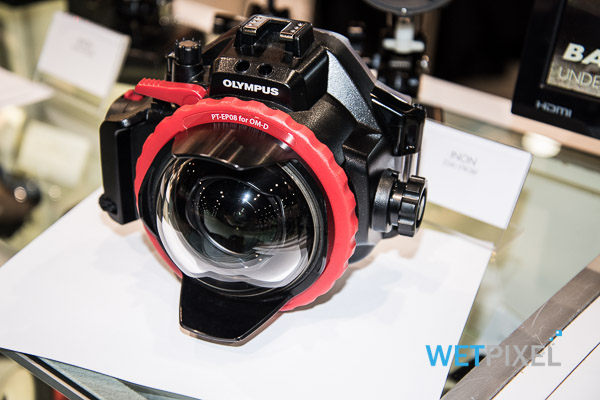
The range consists of flat ports for the 60mm macro lens (with 67mm threads for accessory wet lenses), acrylic and glass domes for the Panasonic 8mm fisheye, and glass or acrylic semi dome ports for rectilinear wide-angle Olympus lenses on PEN housings. In the case of the latter, there is also an adapter to allow the port to be used with OMD housings
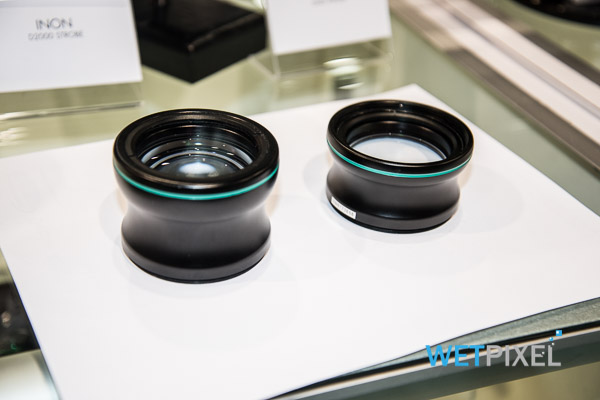
AOI are also offering two magnifying diopters, one giving +6 and one +12 magnification, with these figures having been tested in water. Both are achromatic, have optical coatings and are equipped with a 67mm thread. They offer competitive price points of $180 and $220 respectively.
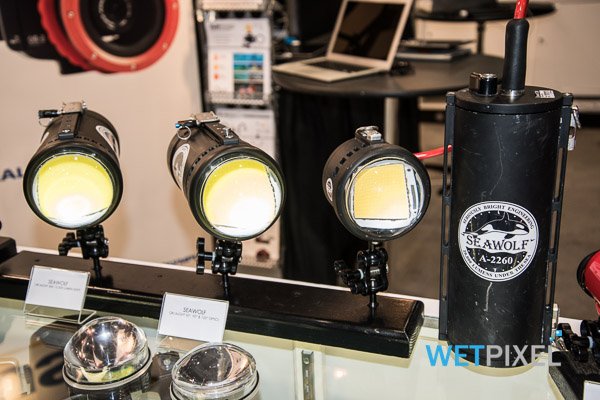
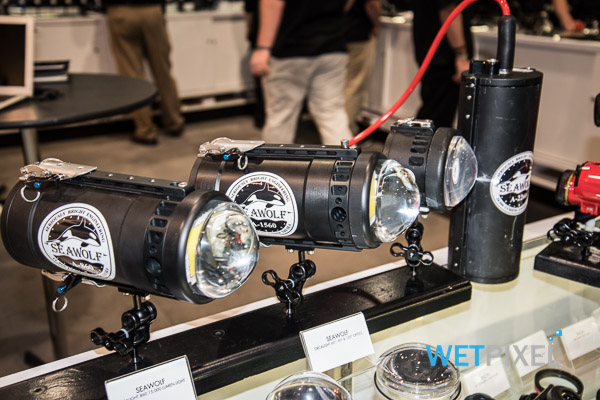
Backscatter are distributers for Orcalight, and had the range on their stand. There are three models, the SeaWolf 860 offering 15,000 lumen, the SeaWolf 1560A offering 22,000 lumen and the canister powered SeaWolf 2260A offering 22,000 lumens. The lights have interchangeable optics, allowing them to have 60°, 90° or 120° beam angles.
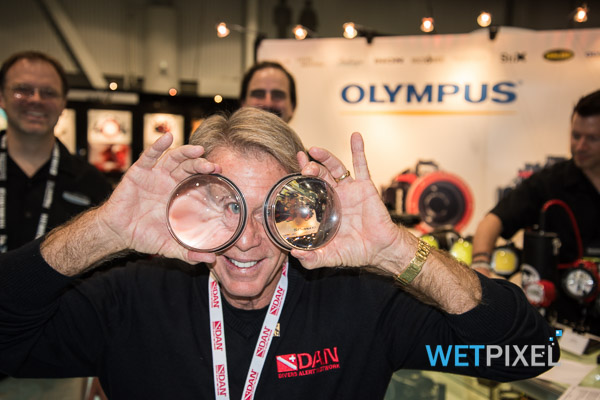
Jim also showed me the dome diffuser for the Inon LF1100 torch:
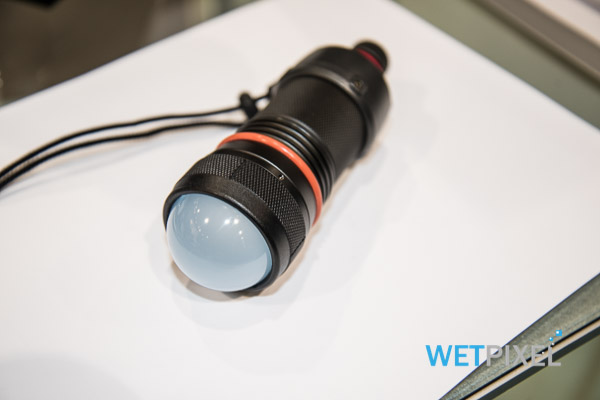

He also showed me the new RGBlue system II light, which features 2700 lumen output and has a burn time of 90 minutes at full power. The RGBlue torches are modular, and the light “heads” and battery packs can be interchanged as required.
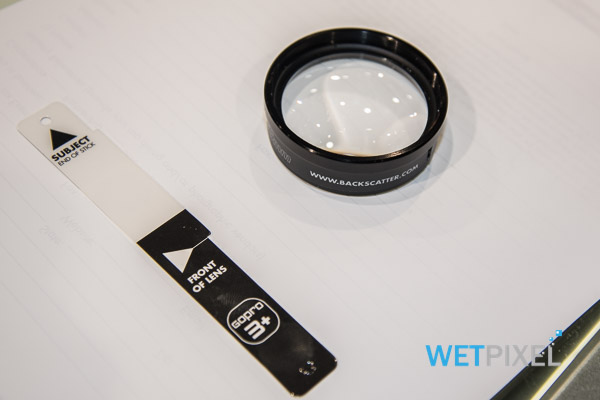
Backscatter has been very successful with their Flip family of filters and lenses for GoPro cameras. Jim and Berkley White showed me a new addition for this year’s DEMA is the Macromate Mini close up lens. This utilises the Flip 3.1 bracket (which is compatible with the HERO4), together with a 55mm threaded flip element.
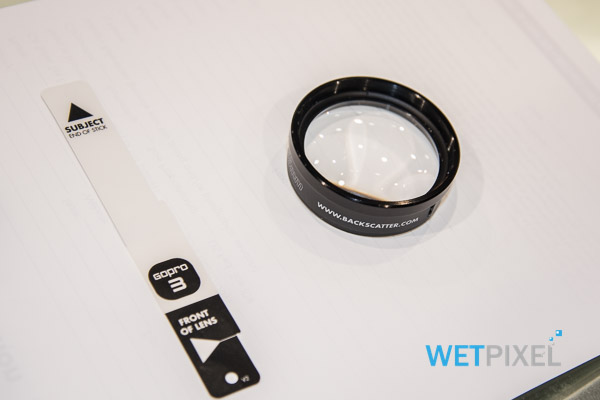
The lens gives a magnifying effect of +20, a focus distance of just 3” (with the HERO3+/4), a 1” depth of field and has external 55mm threads for attaching other filters. It is supplied with a measuring stick, which is designed to show how close you are to the subject! It retails for $89.
Whilst not very useful for macro shooting (which needs external light of some form), Backscatter also offer 55mm threaded shallow, dive and deep filters, as well as ND grad and polarizing versions for topside use. Lastly, there is also a +10 magnifying lens. The Flip system offers a full family of filter and magnifying lens options.
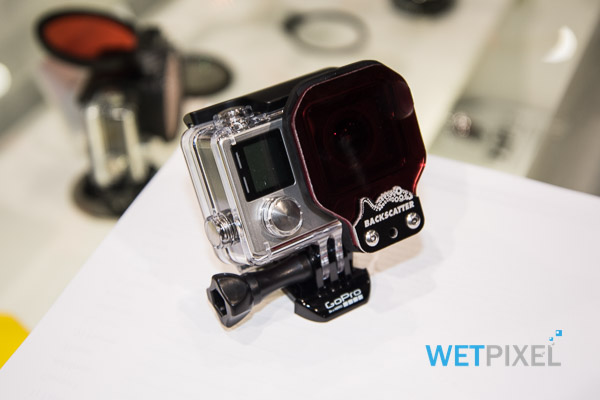
Lastly for GoPro, Backscatter are offering a rubber press-on filter option. This uses the same filters as the Flip system, so can be upgraded at a future point in time if required, but have a simplified mount. They will retail at $29.95
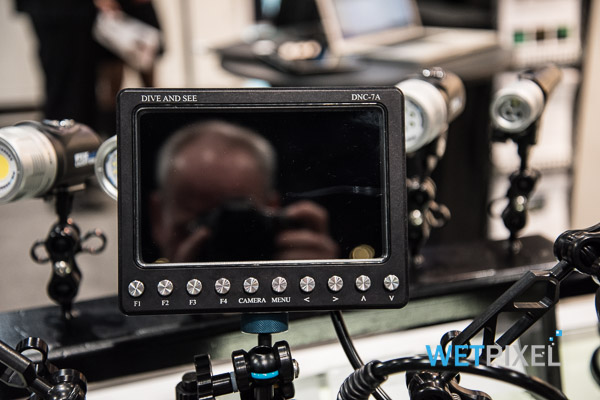
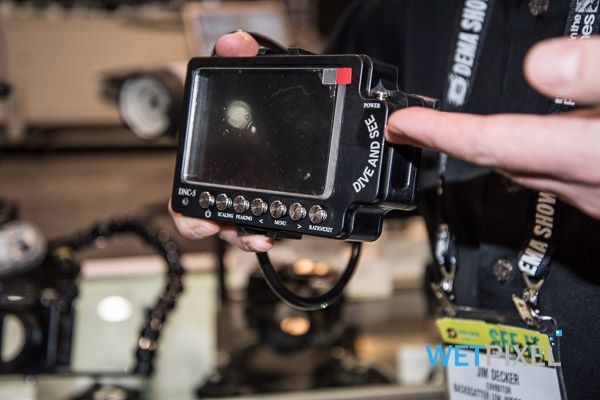
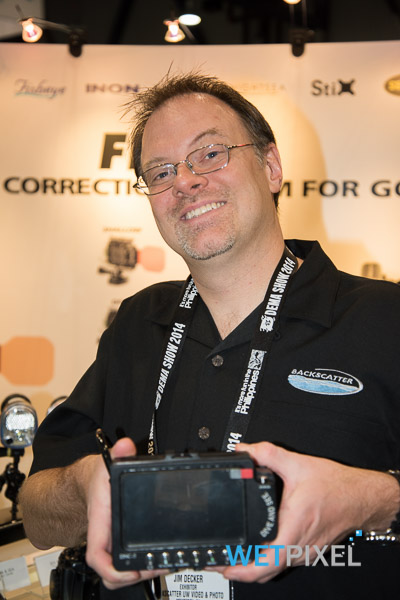
Dive and Sea’s 7” and 5” monitors were also being shown on Backscatter’s stand.
Backscatter produce the Airlock vacuum system, and Jim pointed out that the company is capable of providing custom engineering work to fit these to housings or products that lack suitable ports.
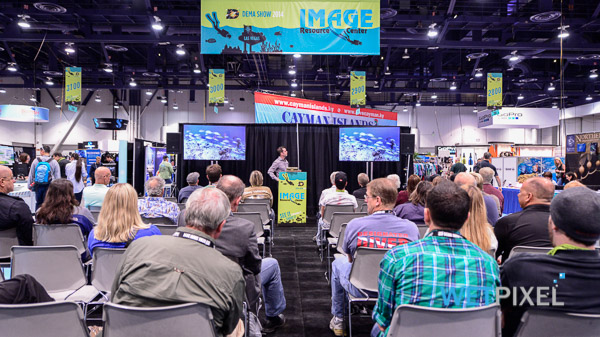
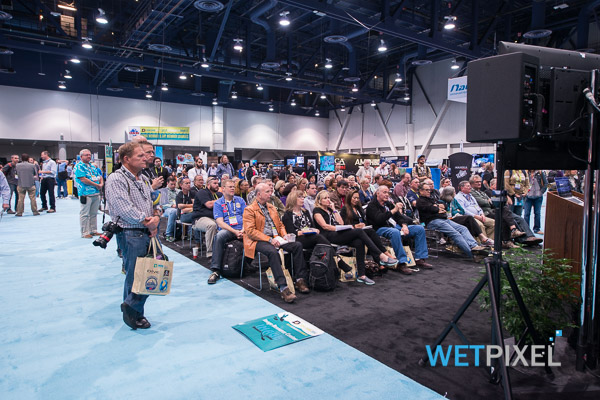
As always, there is an active series of lectures going on at the Imaging Resource Center

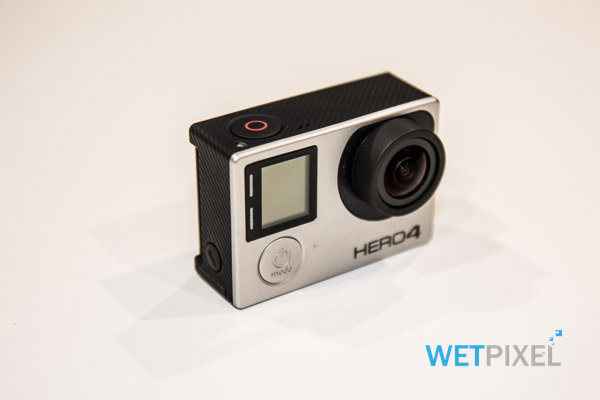
GoPro
GoPro have exhibited at DEMA for around 5 years now, and their stand is always full of interesting items and imagery. Katie Kilbride and Greg DiLeo showed me through the HERO4 range. All the new models have the “Hilight Tag” feature. This allows the user to press the side button to add a tag to the footage to ease reviewing. They also have “Quikcapture” which powers up and records by pressing the “shutter” release button. Perhaps most crucially, Protune mode allows the user to manually adjust white balance, color setting, ISO limit, sharpness and EV.
The new models feature improved low light and a night lapse mode for light painting or star trails.
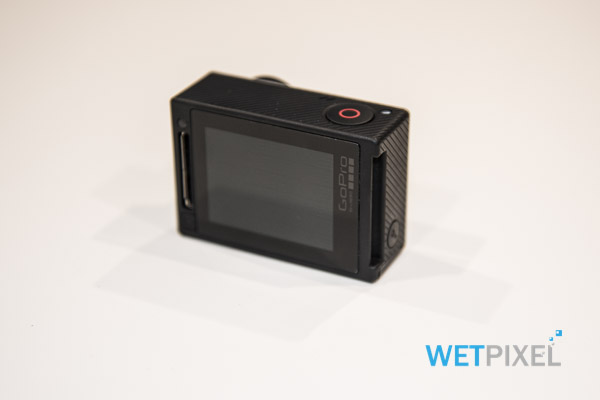
The Black version features 4K video at 30 fps, and 1080p AT 120fps and is controlled via the pushbutton menu system. The Silver version has an integrated touchscreen LCD, but only records 4K at 15fps 720p at 120fps.
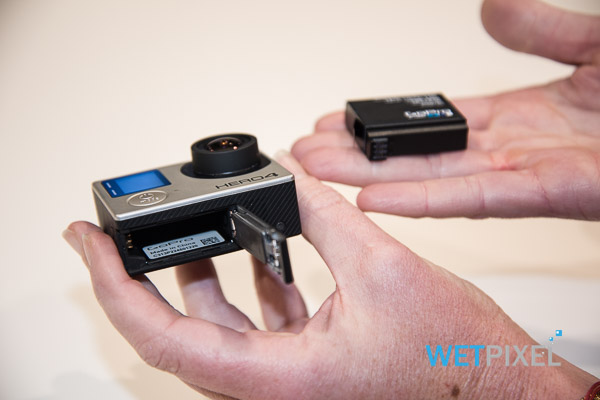
The cameras ship with a standard waterproof housing that has a depth rating of 131ft. GoPro can supply a specific Dive housing, which is rated to 197ft and has a glass flat port.
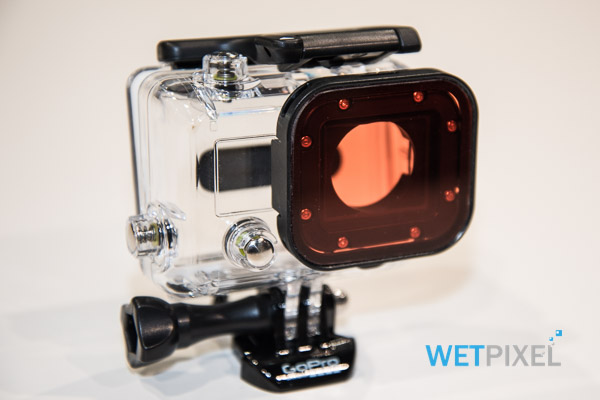

Lastly, GoPro are offering two filters for their housings, one magenta for green water and one red for blue water. These attach to the housing by push fitting onto the port, so are available in two sizes to suit the standard housing and the dive housing.

Keldan
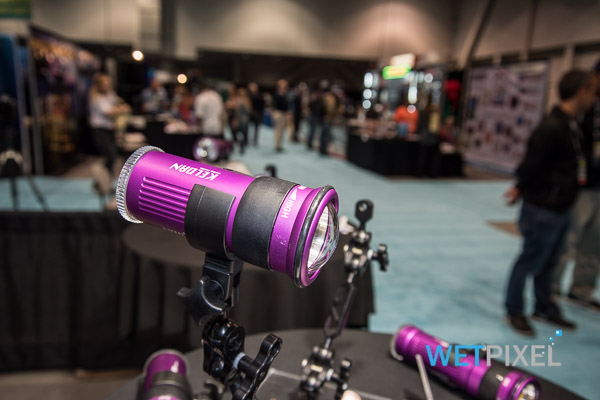
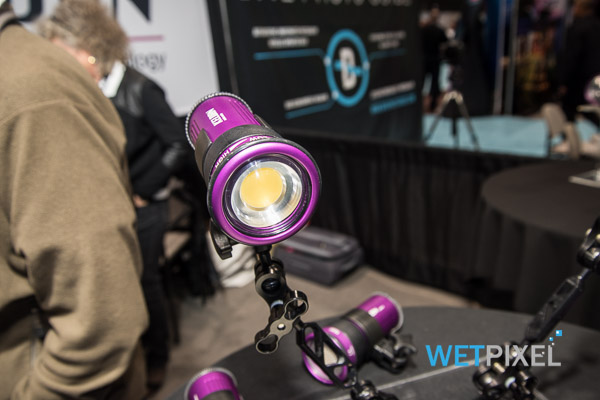
Daniel Keller has been working hard at developing his range of video lights. He has not changed the basic, successful design, but has chosen to try and increase the output of his existing ones. The Video 4X features an output of 6,000 lumen and a burn time of 45 minutes at full power.
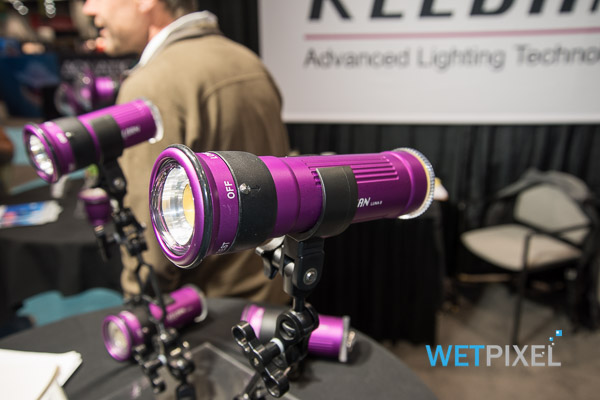
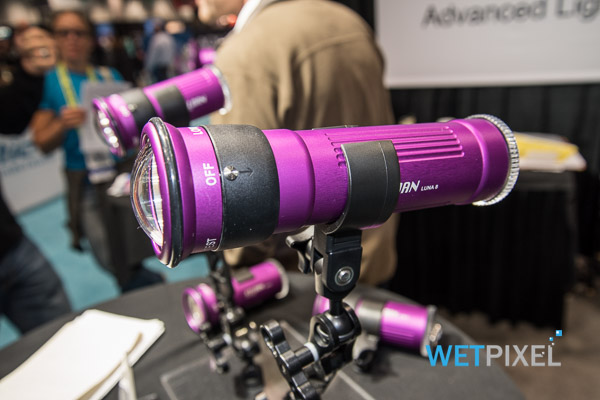
The Video 8X has an output of 10,000 lumen for the same burn time. Both now have dome lenses to provide super soft edges to the beam and carefully designed reflectors to minimize light loss between the LED and the lens. Both lights are 5000°K and have a CRI of 83.
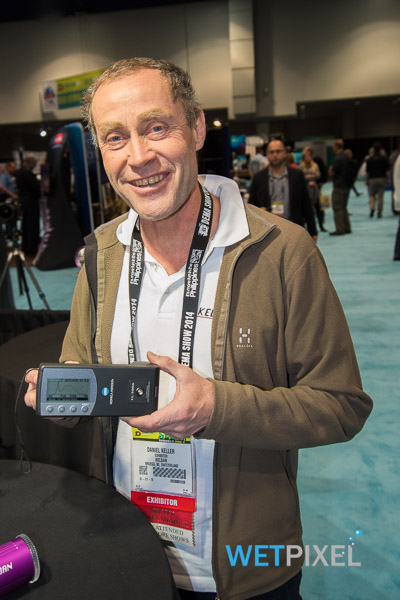
Daniel has invested in the equipment necessary to measure both his lights’ output and their spectrum. He actually had a spectro photometer at DEMA with him! This investment he feels allows him to make accurate measurements and he tends to quote a conservative figure, allowing for around 5% performance margin.
He has also upgraded his bigger lights with the Video 8M (for modular) now having an output of 9,000 lumen. He offers a version with an output of 8,000 lumen with a CRI of 96, ideal for applications where light quality is paramount. Older 8 series lights can be updated by purchasing an upgraded module. There are also cyan, uv blue and deep red modules available for differing applications.
Daniel showed a piece of video shot by Laurent Ballesa during his expedition to find coelacanth at 120m off South Africa. The team used Keldan lights to capture both video and stills.
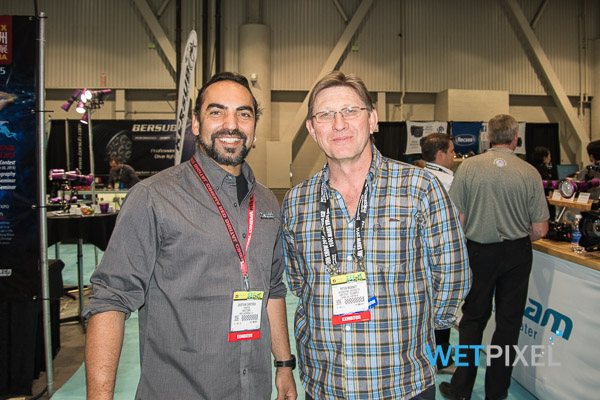
Ikelite
I then met with Jean and John Brigham of Ikelite. The company has produced many new products over the past year, and is often very early to market with housings for new camera models.
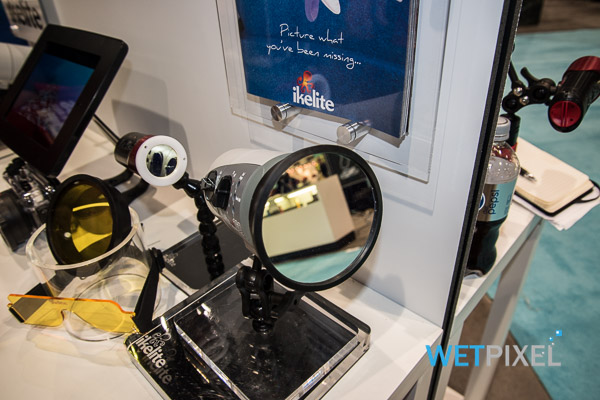

A new product line is a series of accessories for fluorescence photography. These include exciters for DS series strobes, and the Vega light.
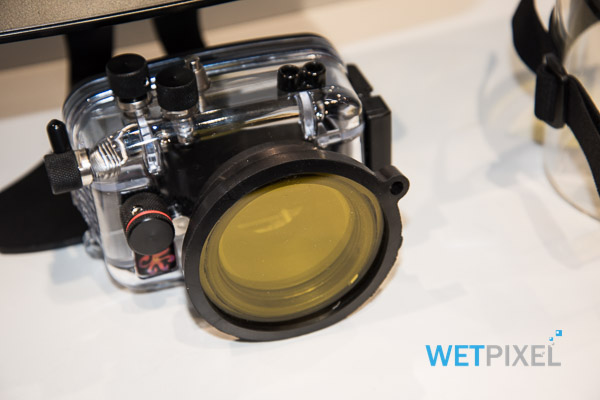
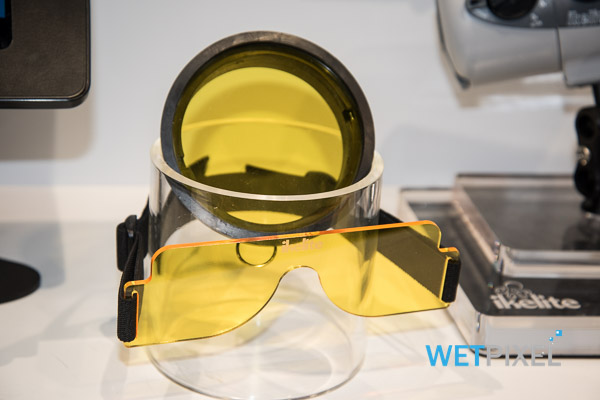
They offer yellow filters for all flat lens ports in both SLR and and compact ranges and a mask filter so that the diver can see the surroundings.
Jean showed me Ikelite’s new catalog, which features a message of “thinking out of the box” about underwater camera usage. An example of this is not solely think of a housing as being something used on vacations, but as a tool that could perhaps be used in swimming pools, rivers or lakes closer to home when not away.
Ikelite has redesigned their arm system, and has used the lightening cut outs in the arms to provide a rail for accessory attachment. In addition they offer two styles of clamp, for lighter weight/less strength or heavier with more strength. There are numerous options, including fitting a top rail for carrying and a 67mm lens caddy.
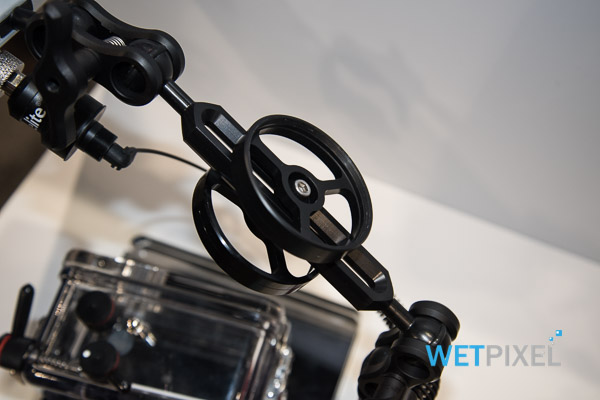
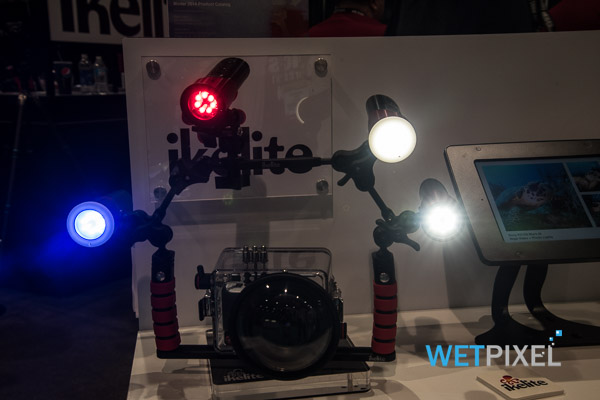
The Vega light now has a family of diffusers that simply thread onto the front of the light. These include a 500°K warming diffuser (which raises the light’s color temperature to 5200°K), a dichroic diffuser, a red version and a lossless one. Jean is investigating using the lossless material to construct diffusers for strobes too.
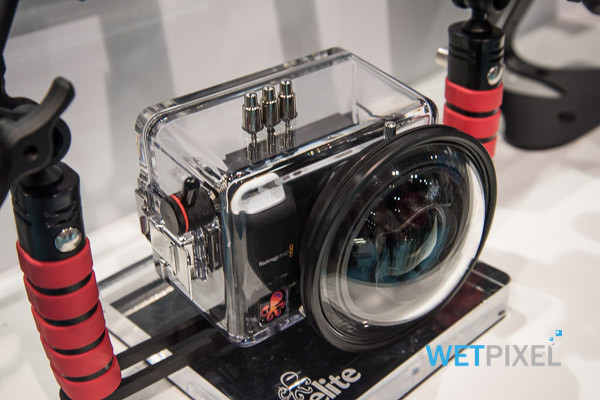
Jean showed me the company’s housing for the Blackmagic Pocket Cinema camera.
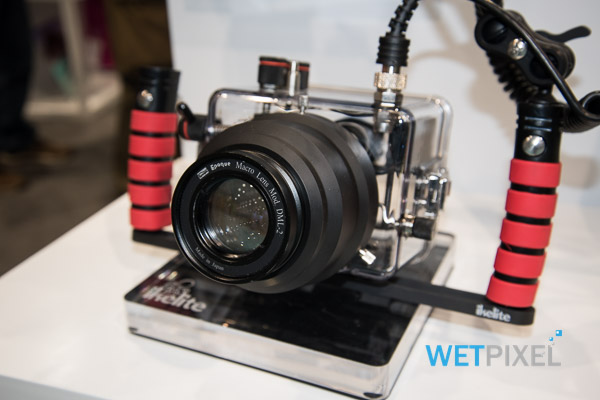
At DEMA 2013, Ikelite showed a housing for the Canon EOS SL1. For 2014, the company has modified the macro port for the system. It now attaches with 3 thumbscrews and features a 67mm thread for the attachment of external diopters or filters.
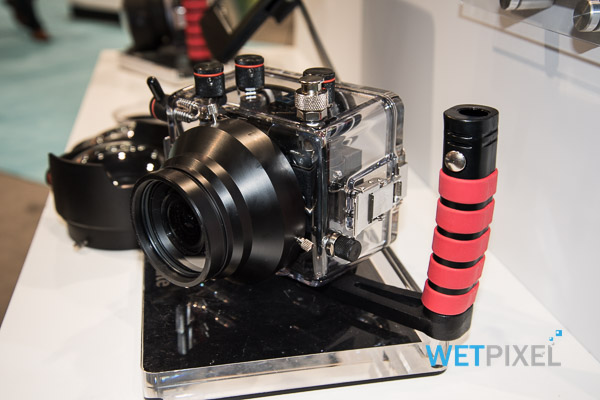
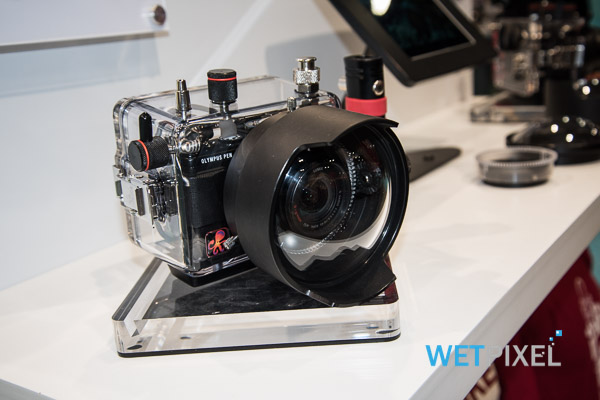
This same approach carries over into the new MIL (Mirrorless Interchangeable Lens) range of housings. Currently available for the Olympus PEN EPL-7 and OMD-EM10 cameras as well as the Panasonic GX7, these housing all feature three port options, a super wide dome for fisheye lenses, a semi dome for rectilinear zoom lenses and a macro port. Once again these use the 3 thumbscrew attachment mechanism.
The zoom gear, if required, is attached very simply and efficiently once the camera and lens are inserted into the housing. Ikelite will supply different zoom gears depending on the lens/camera combination required. The cameras are secured into the housing via a dovetailed saddle, which also has a tripod attachment hole, meaning that it can remain attached to the cameras most of the time.

All the MIL system housings feature Ikelite’s standard TTL strobe triggering.
John showed me the housing for the Panasonic LX100 compact camera which, due to its complex controls, gave the engineers at Ikelite a challenge to accommodate!
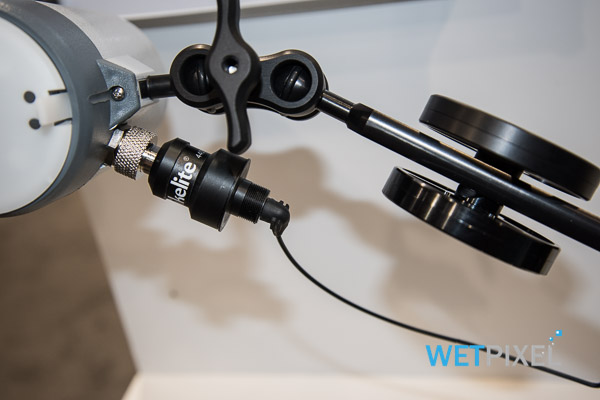
Ikelite offer two optical converters. One is designed to allow the firing of DS seres strobes via an optical signal. The advent of electrical to optical converters that mount onto camera hot shoes has meant the this has been revised.
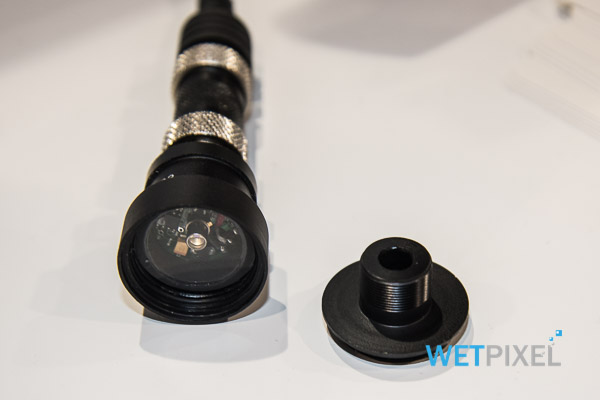
In addition, Ikelite offers a remote or slave optical converter for off camera strobe triggering.

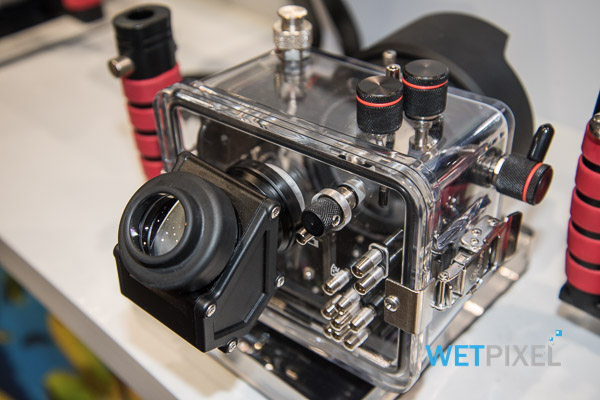
Almost lastly, Ikelite will be offering straight and 45° magnified viewfinders that will be compatible with their SLR and MIL system housings. They will thread directly into the hole that is left when the standard viewfinder is removed, and will be available both as factory installed options or for retro fitting. There will be two “lengths” of the 45° version as some of the control arrangements on some housings will need more clearance.

Finally, the Gamma light is now available in purple and pink finishes!
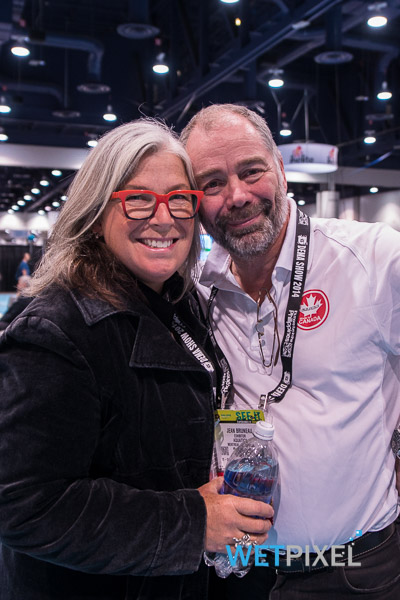
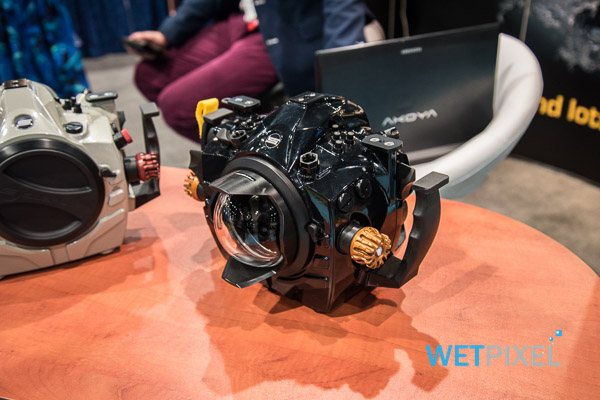
Subal
Subal’s Stephan Dietze was showing the full range of the Austrian company’s housings. Subal has done some redesign of its classic designs and these have, they feel, improved both the ergonomics and appearances of the housings.
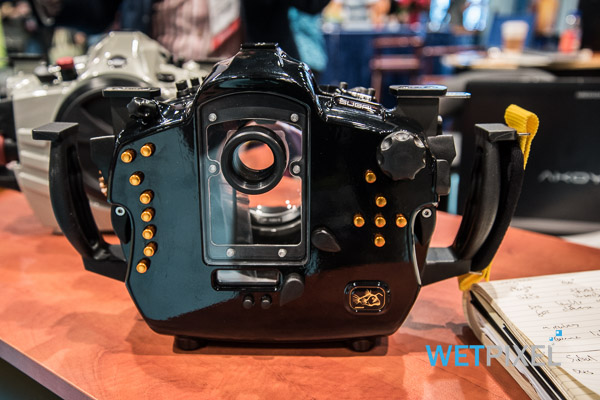
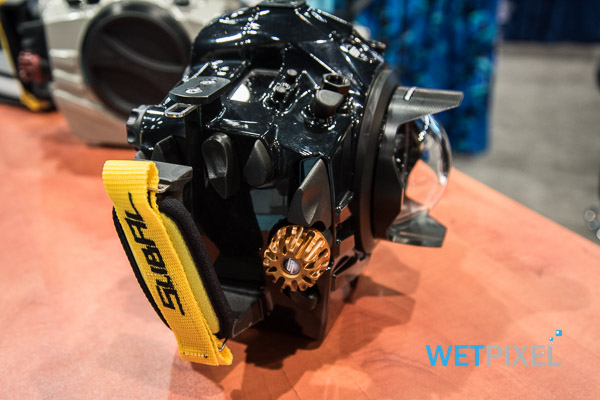
Their new housing for the Nikon D4s features these changes and also has a name: The “Angler”. The housing has a resemblance to an anglerfish and is designed for deep diving (130-140m), hence the name. It has oversized control knobs for zoom and aperture, which fall very readily to hand.
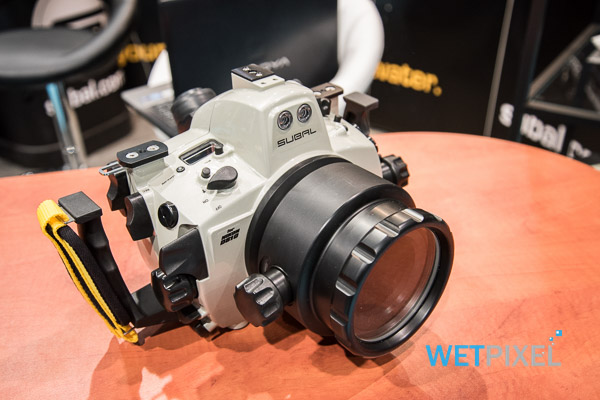
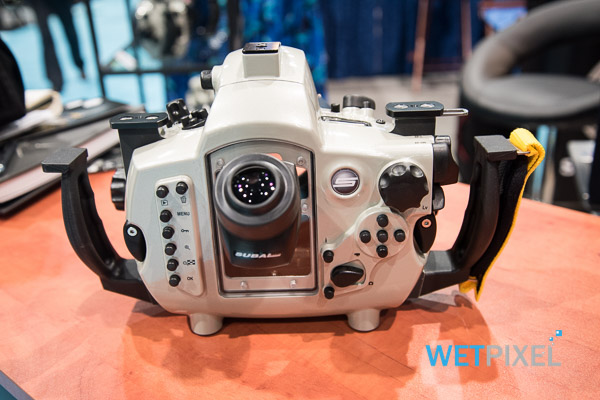
Subal’s housing for the Nikon D810 is a more traditional product and has been shipping since mid-October.
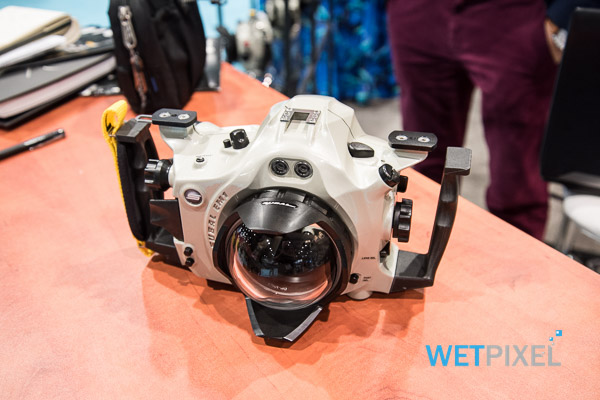
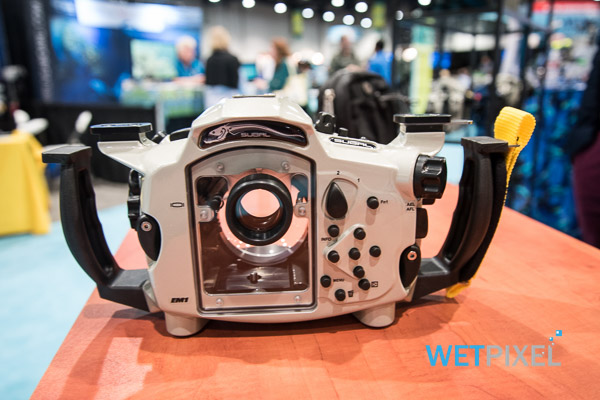
The company’s housing for the Olympus OMD-EM1 features an innovative new on/off switch design.

Subal users will know that up until now, if both camera and housing were not in the on position, the switch either did not work, or damaged the surfaces on the camera. The new switch design means that this is no longer a problem! It will be added to other models in due course too.
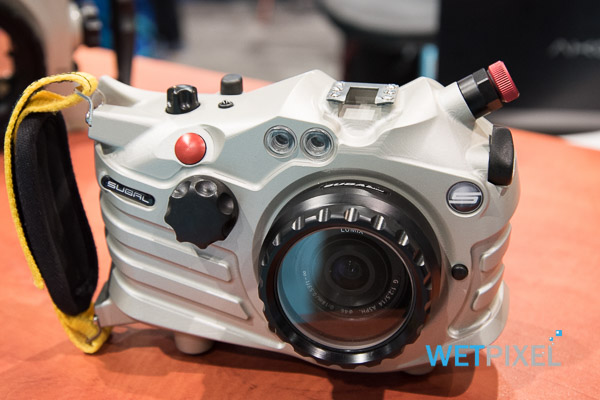
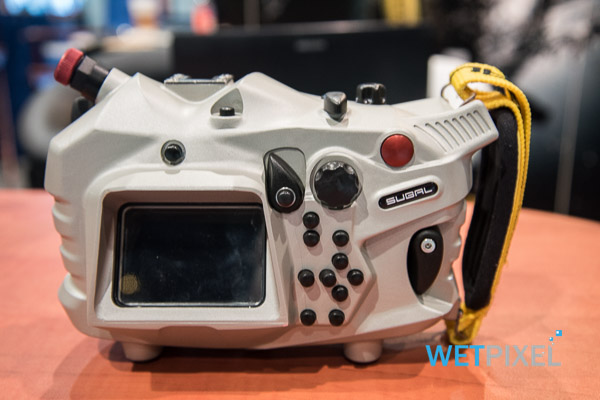
The OMD-EM1 housing is equipped with both electrical (Nikonos, Ikelite or S6) and fiber optical connections. This is true with the Subal housing for the Panasonic GX7 too.
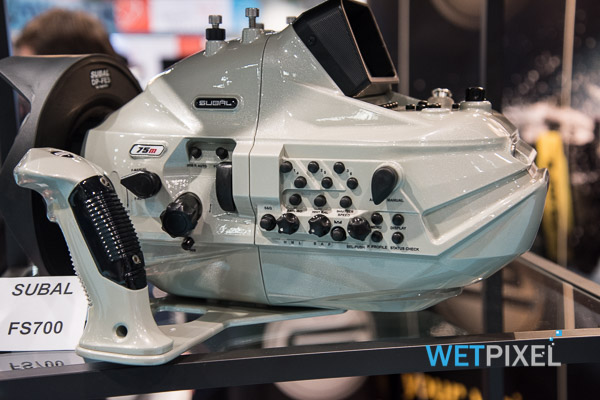
In terms of video, the housing for the Sony FS700 was on the stand. In addition, the company’s housing for the Convergent Designs Odyssey 7Q OLED monitor and recorder was showing.
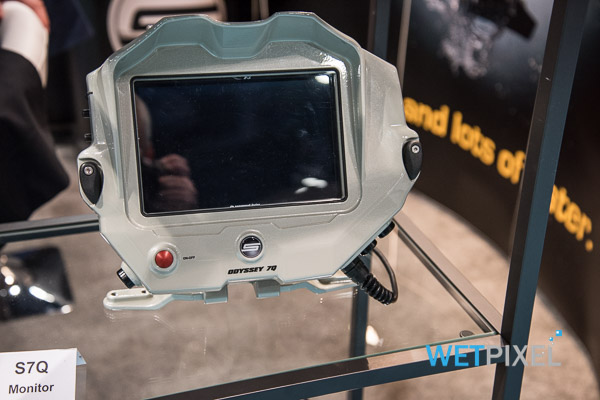
This is required for 4K output from the Sony FS700, but can also be used with other cameras.
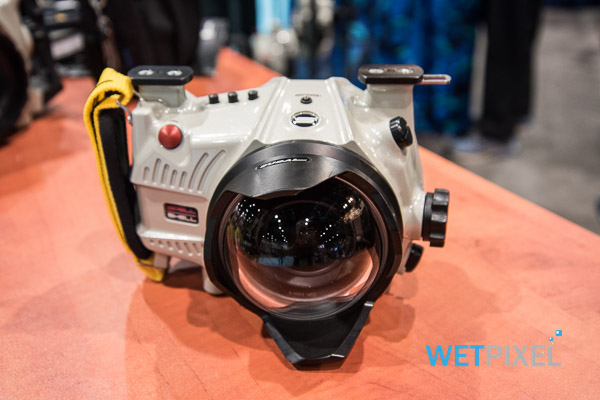
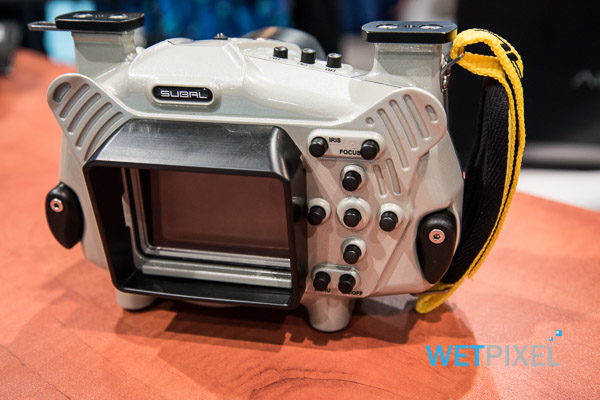
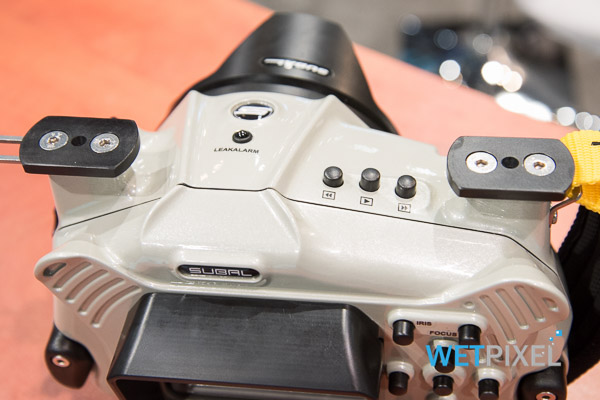
Subal also offers the Spell Shell housing for the Blackmagic Pocket Cinema camera which is shipping now.
Stephan informed me that the company will be shipping their housings for the Nikon D750 and the Panasonic LUMIX GH4 by the end of 2014, with a housing for the Canon EOS 7D Mark II following early in 2015.
Booth visits day 1: Backscatter, GoPro, Keldan, Ikelite, Subal.
Booth visits day 2: H20 Tools, 10 Bar, Seacam, PolarPro, Aquatica, Nauticam, Acquapazza.
Day 2: Wetpixel/DivePhotoGuide Underwater Imaging Party.
Booth visits day 3: New World Publications, Sea& Sea, Gates, Light & Motion, Watershot, Inon.
Booth visits day 4: Saga, ULCS, Aquatica, BS Kinetics, Fantasea, Orcalight, XIT404, iDive.
Mark Goyen: A newbie’s impression of DEMA.
Steve Williams: Final thoughts on DEMA 2014.
Adam Hanlon: Finishing thoughts and round up.